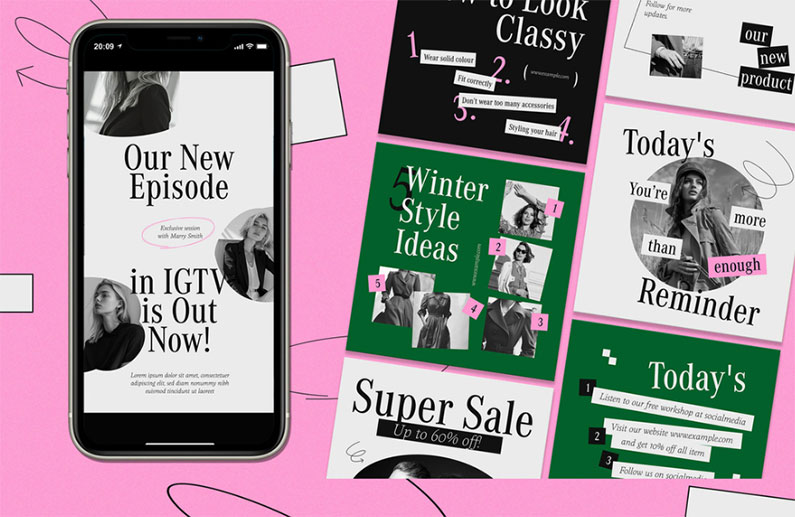
By: Mik Browett Jan 27/2025
In today’s digital age, brands are constantly looking for ways to stay relevant. One of the most popular ways to do this? Jumping on trends. From using buzzwords like “demure” to joining TikTok challenges, trend hopping is everywhere. But is it helping or hurting brands? Let’s dive into the world of trend inflation and cultural suffocation to uncover the truth behind this marketing strategy.
Trend inflation refers to the oversaturation of trends in the market. It happens when too many brands latch onto the same buzzwords, challenges, or themes in a short period of time. The result? A loss of authenticity and originality. When every brand uses words like “demure” or “brat” just because they’re trending, it starts to feel less like genuine engagement and more like forced participation. Consumers begin to tune out, and the trend loses its value.
A study from Sprout Social found that a third of consumers believe brands chasing viral trends can be embarrassing. When brands constantly try to stay ahead of the curve by jumping on every new trend, they can become overexposed, diluting the trend’s meaning and impact.
Cultural suffocation is a concept that comes into play when brands start hijacking trends that aren’t a natural fit for their identity or values. This often results in a shallow interpretation of a trend, which may seem tone-deaf or even disrespectful to the culture from which the trend originated. For example, using astrology buzzwords for a luxury brand that has no real connection to spirituality can feel like an attempt to appear “cool” rather than genuine. Over time, this can suffocate the very essence of the culture the trend represents, turning it into a commodity rather than a meaningful connection.
As noted by experts, brands should avoid commodifying trends simply for the sake of marketing. Not only does this risk diluting the trend, but it can also backfire by alienating consumers who see through the surface-level participation.
Trend hopping, when done correctly, can help brands stay relevant and increase engagement. Leveraging timely trends can make a brand feel fresh, relatable, and in tune with its audience. Think of it as a way to inject personality and timeliness into a brand’s identity.
For example, a brand that successfully uses a popular TikTok sound or challenge may see a boost in organic reach and interactions, as users love to engage with viral content. Additionally, aligning with trends can help brands tap into broader cultural conversations, making their messaging more contemporary and aligned with current interests.
According to data from Convince and Convert, brands that engage in relevant trends can humanize their presence and connect with their target audience in a more authentic way. This can lead to greater brand loyalty and even viral success if executed strategically.
Duolingo is a standout example of a brand expertly leveraging trends to connect with its audience. By staying agile and embracing relevant cultural moments, they consistently show up at the “right time, right place.” What sets Duolingo apart is their ability to incorporate trends without compromising their unique brand voice. Their playful, witty tone remains intact, allowing them to engage with users in a way that feels authentic and fun, all while staying true to their mission of language learning. This balance between trend-savvy and brand consistency has made Duolingo a master of modern marketing.
On the flip side, hopping on trends without thinking it through can damage a brand’s reputation. Overuse of buzzwords, such as “demure” or “brat,” can make a brand seem out of touch or try-hard, especially if the trend doesn’t align with the brand’s values or target audience. When the connection between a trend and the brand feels forced, consumers notice and don’t like it.
One of the dangers is appearing inauthentic. Consumers are becoming more discerning, especially when it comes to brand transparency. If a brand seems to be using trends simply for clout rather than true connection, it can erode trust and alienate loyal customers.
Additionally, jumping on trends that don’t align with a brand’s identity can cause confusion. If a company known for its serious, professional tone suddenly posts about astrology or jumps on a meme just to be “fun,” it can leave customers scratching their heads, questioning the brand’s credibility.
There’s a smart way to participate in trends without losing your brand’s authenticity. Follow these five steps to use trends most effectively for your business:

While it’s fun and sometimes effective to hop on trends, it’s crucial to think about whether the trend is relevant to your brand’s identity. Brands that overuse trends risk cultural suffocation and trend inflation, but those that use them wisely can engage audiences in creative and timely ways. So, before you jump on the next viral trend, ask yourself: is this really us?
If you’re looking for help with your company’s social media platforms, look to the experts at social media planning to breathe life into your accounts. We can also help with branding and voice if you’re unsure where to start.